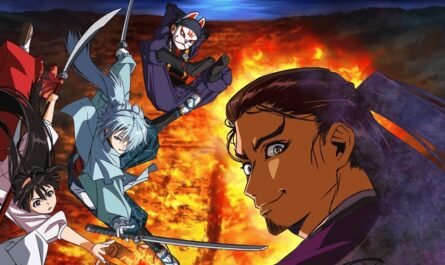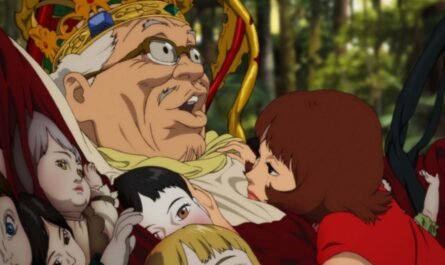“Chinese anime is amazing these days.”
” Is Japanese anime overtaken by China?”
Recently, more and more people have been asked about Chinese animation and the Chinese market. The reason may be that Chinese 2D animations such as the movies “The Legend of Hei” and “Heaven Official’s Gift” have advanced to Japan and have been well received.
While some people are genuinely surprised by the growth of 2D animation production in China, others expect a sensational topic that even animations that Japan is doing well overseas will be overtaken by China and perish. In any case, China is now a massive market for Japanese animation, so the trend is worrisome. Can Japanese Anime Survive in China and the World?
After the heyday of Chinese business is over.
As far as business is concerned, as of 2021, Japanese animation is intricate in China. A long time ago, in the mid-10s, it was said that a considerable amount of production costs could be recovered simply by selling programs to China.
However, the platform was weeded out due to the fierce competition for video distribution, which was the main battlefield, and the differences in the strategies of each company became evident. The number of late-night anime buyers is almost one, and the selling price is falling due to the lack of competition.
Furthermore, this spring, the pre-censorship of all episodes of the broadcast program by the government began, which surprised the industry. Until now, the distribution company had censorship of each story. Japanese anime series are often completed one episode just before broadcasting, and the new system cannot be distributed simultaneously with China. In fact, in the fiscal year ended April 2009, a series of works could not be released simultaneously during the day.
Due to the globalization of the Japanese animation business, simultaneous expansion in China and Japan, and overseas has become indispensable. It also affects the purchase price of the program. In the future, depending on the circumstances in China, the release and system may change in Japan after the production and completion of all episodes.
The problem is that even if the whole story is delivered and pre-censored, there is a possibility that permission will not be given in the first place. The licensing standards are not clearly stated, and risks are inevitable even after completion.
There are two sides to strengthening censorship. One is that we want to prioritize domestic products rather than overseas products. The other is the recent trend of tightening regulations throughout China. If so, these movements will continue for the time being.
Due to the high risk, it seems that there will be a move not to incorporate China into the original business plan in the future. The idea is to draw a business plan that makes profits without sales in China, and if it can be sold in China, it will be an additional income.
Powerful CG animation, hand-painted, is the starting point.
If the influx of works from overseas weakens, it will be advantageous for Chinese animation production companies. However, regardless of regulations, the quantity and quality of jobs in China have been increasing in recent years. Domestically produced programs based on their own country’s online novels are more focused on Chinese viewers than overseas works, so there is no doubt that they will increase their market share in the future.
In terms of competitiveness, the power of CG animation is significantly increased compared to 2D hand drawing. There are also a series of mega-hits such as “Nata Rebirth” (19) and “Jean Zooya: Legend of the Gods” (20). The overwhelming image is no longer particular that China outperforms Japan in the field of CG. However, rather than Japan being technically inferior, it reflects the difference in the amount of money that can be invested in blockbuster movies. Compared to hand-drawn animation, CG has a shorter acquisition period of technology, and production tools are standardized globally. The quality tends to be affected by the number of human resources, time, and equipment invested.
As for hand-drawn animation, excellent works such as “The Legend of Hei” appear. However, at present, it exists in the Chinese video industry in terms of points, and it is not in a situation where many works can be created as a system. In addition, China’s video industry tends to face larger projects, CG, that are likely to generate profits with people and funds. Hand-drawn animation cannot wipe out the sidestream feeling as a business. It is uncertain how far small shoots can be grown.
Instead, Japanese companies that are mainstream in 2D animation, which is expanding into China intending to develop and produce original works locally, may have a chance to play an active role in the future.
Can Chinese animation expand overseas?
It is a different matter to gain popularity in Japan and to export it overseas. In the CG field that China has raised its level, there are many rival companies in North America and Europe.
The game only at the video level is tricky. Plus, alpha is required, but China, which has substantial expression restrictions in bold themes and subjects, is at a disadvantage. In addition, the content optimized for the vast domestic market may be challenging to get used to overseas. At present, even hit works such as “Nata Rebirth” and “Nishiyuki Hero Is Back” (15) have not been able to leave a track record overseas.
This situation is the same for 2D hand-drawn animation. The expression of Japanese energy, which is often thought to be unique to Japan, has gained a certain degree of globality over a long time. The subject matter and expressions of everything are also Japan’s strengths. It is more complicated than many people think that Chinese animation goes beyond this.
There may be a reason for the Chinese company’s production order to Japan, which seems to have little profit from the Japanese side, and the expansion of the animation production company into Japan. As a step toward global development, we will utilize Japan, which has already expanded into the world.











